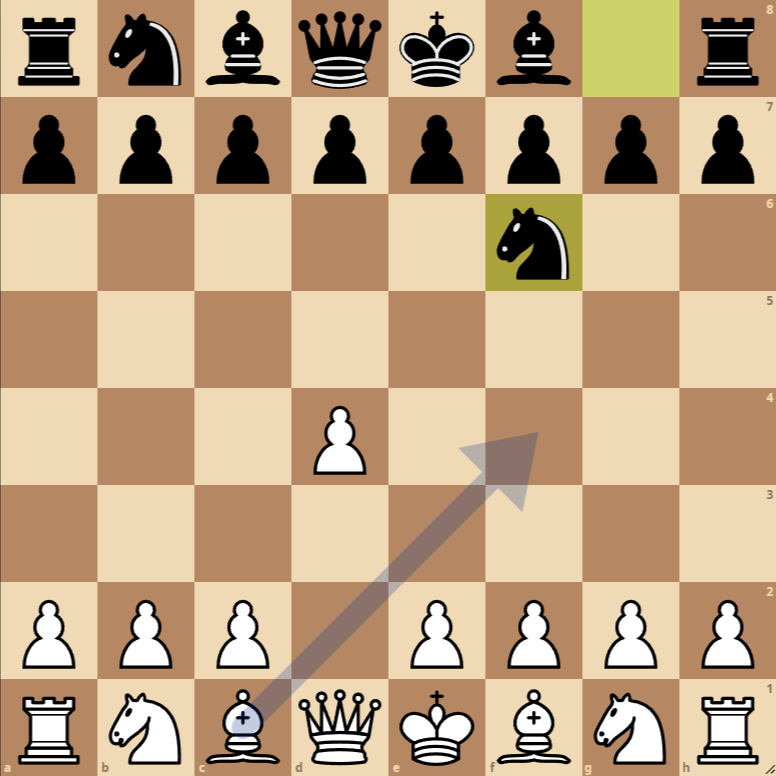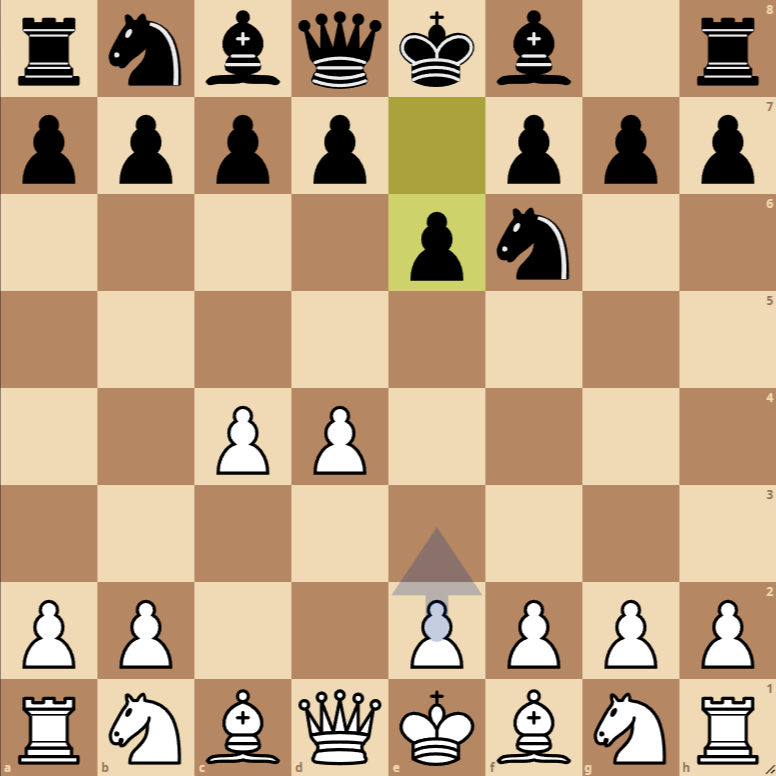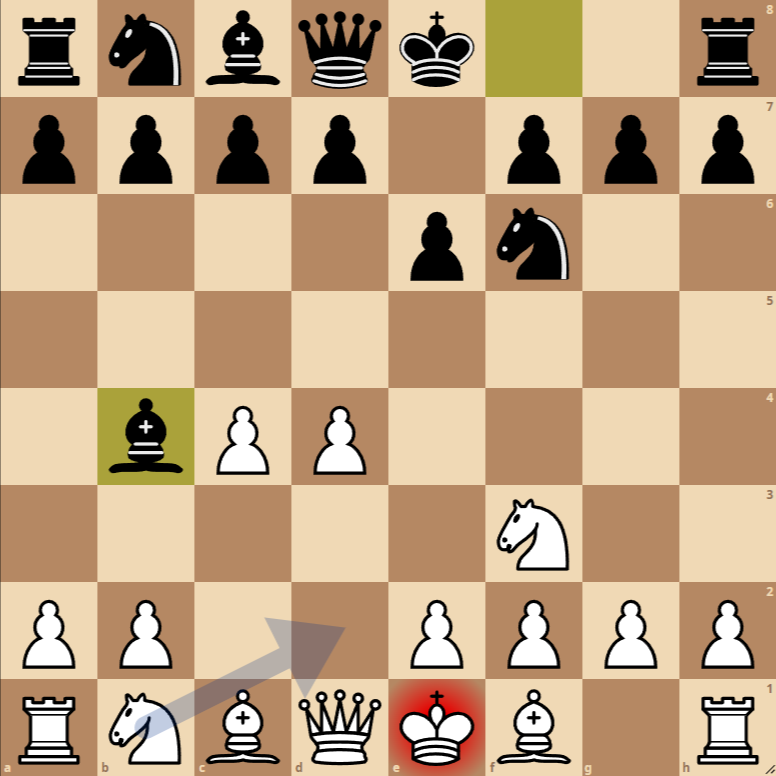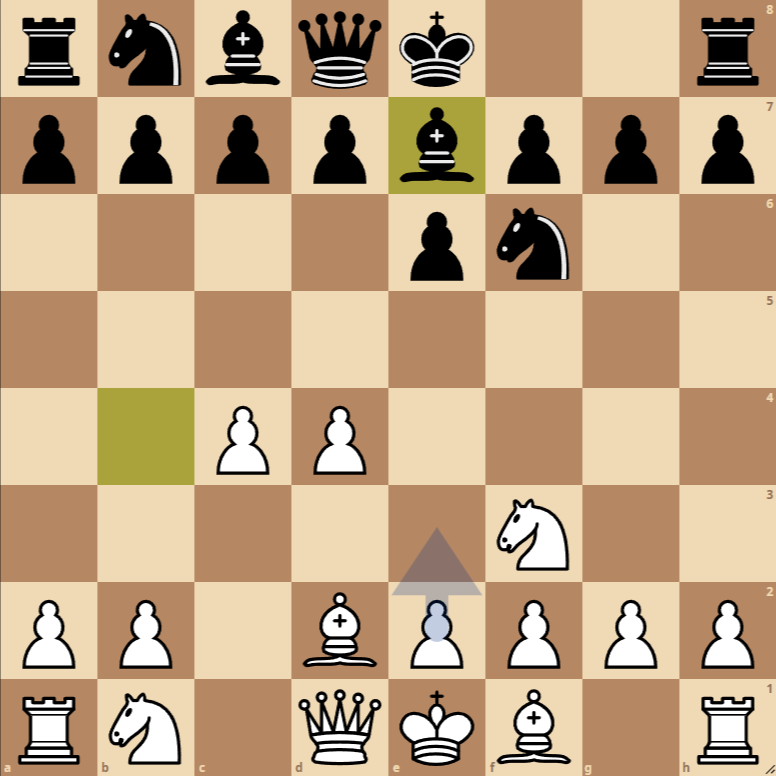How to Play the Bogo-Indian Defense Withdrawal Opening



- 1. d4 Nf6: White opens with the queen’s pawn, aiming to control the center and free the light-squared bishop and queen. Black responds by developing the knight to f6, attacking the d4 pawn, and preparing to counterplay in the center.
- 2. c4 e6: White plays c4, strengthening their central control and preparing to develop the light-squared bishop. Black responds with e6, planning flexible piece development and the possibility of pushing d5 to counterattack in the center.
- 3. Nf3 Bb4+: White develops the knight to f3, supporting the d4 pawn and preparing for kingside castling. Black responds with Bb4+, a check to the king that forces White to respond, usually by blocking with a piece other than the king to preserve castling rights.
- 4. Bd2 Be7: White moves the bishop to d2, blocking the check and preparing to regain control of the central squares. Black retreats the bishop to e7, prioritizing king safety and planning kingside castling.
Variations of the Bogo-Indian Defense Withdrawal

1. d4 Nf6 2. c4 e6 3. Nf3 Bb4+ 4. Nbd2
In this variation, White develops the knight to d2 instead of moving the bishop, protecting the c4 pawn and preparing the possibility of e4. This move also leaves the option of a3, forcing the exchange of the bishop for the knight on d2.
1. d4 Nf6 2. c4 e6 3. Nf3 Bb4+ 4. Nc3
Another possibility for White is to develop the other knight to c3, directly challenging the bishop on b4. This move increases pressure in the center and sets the stage for a quick central pawn push.

